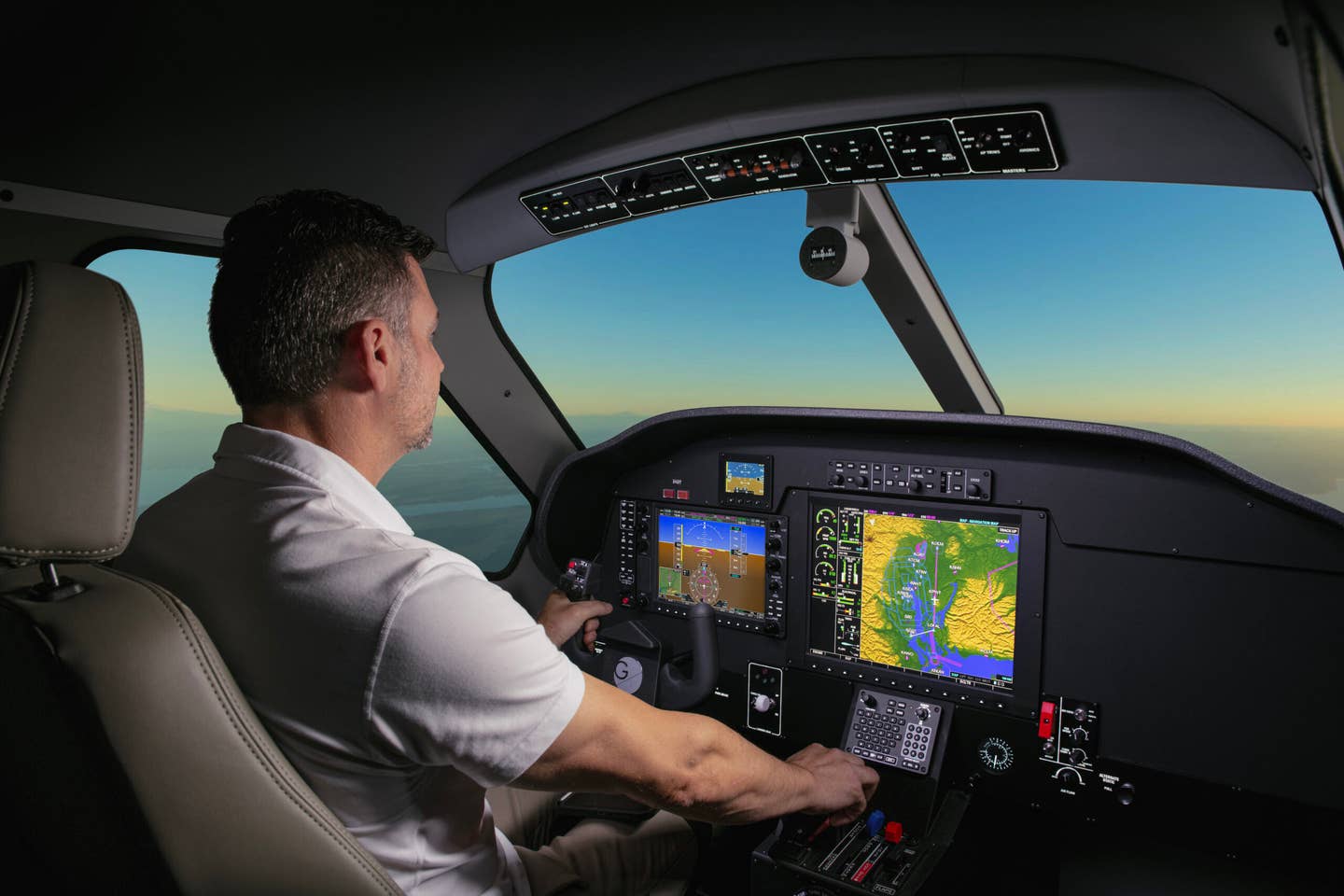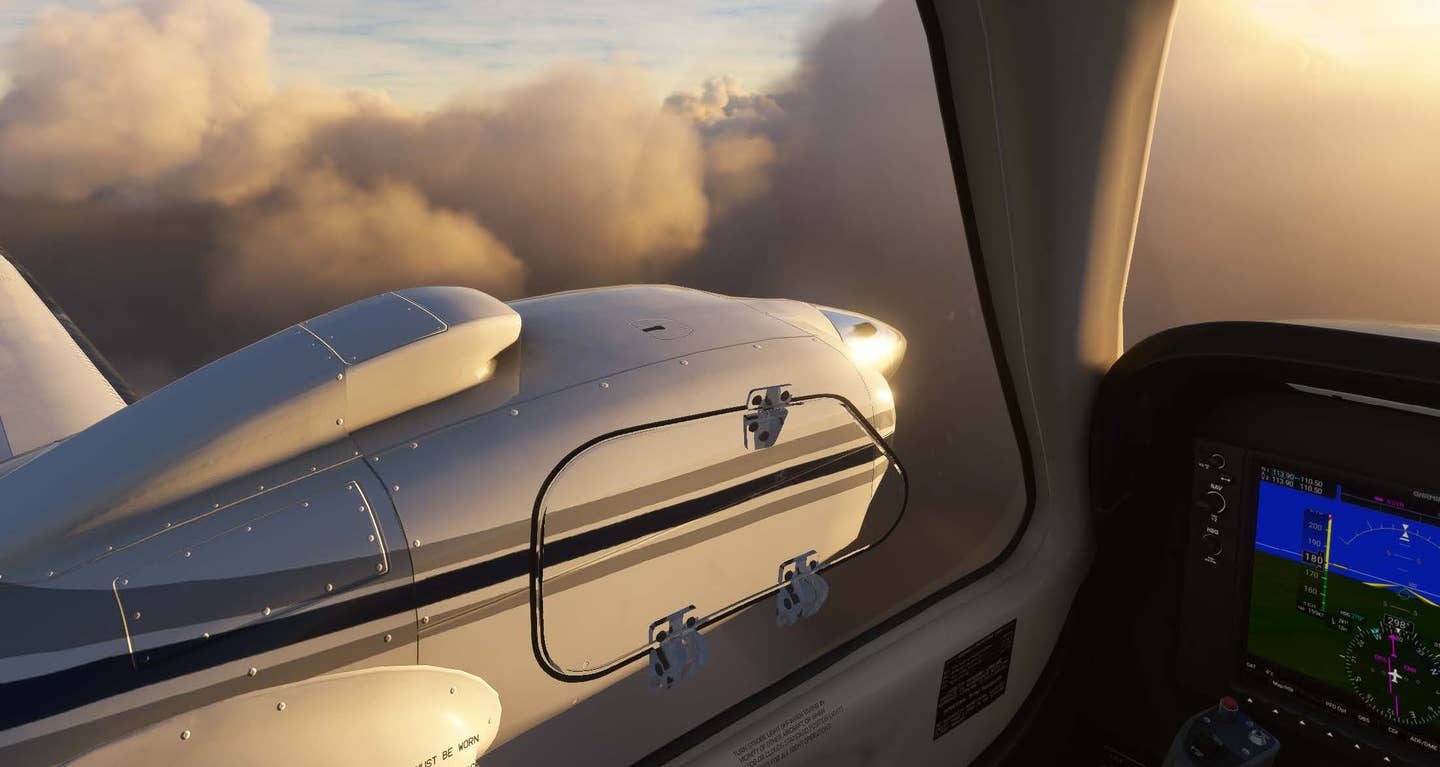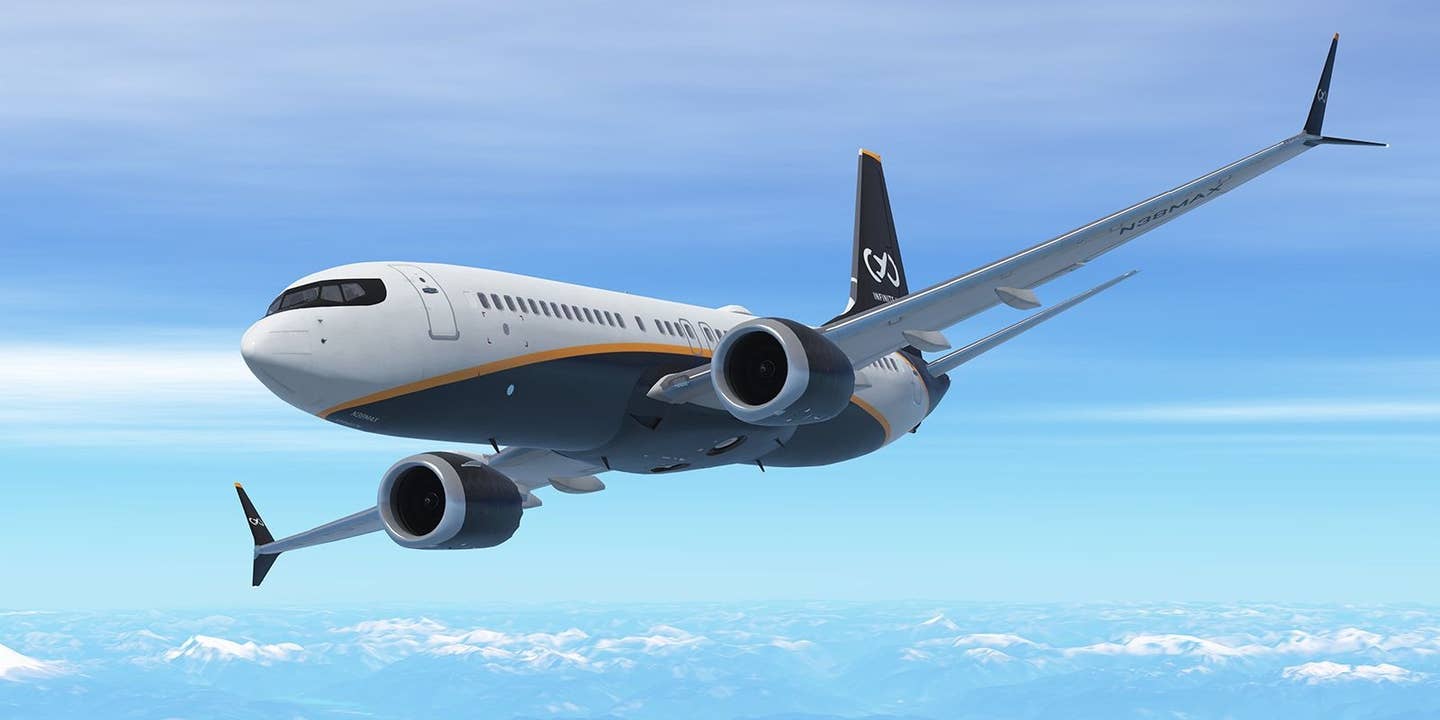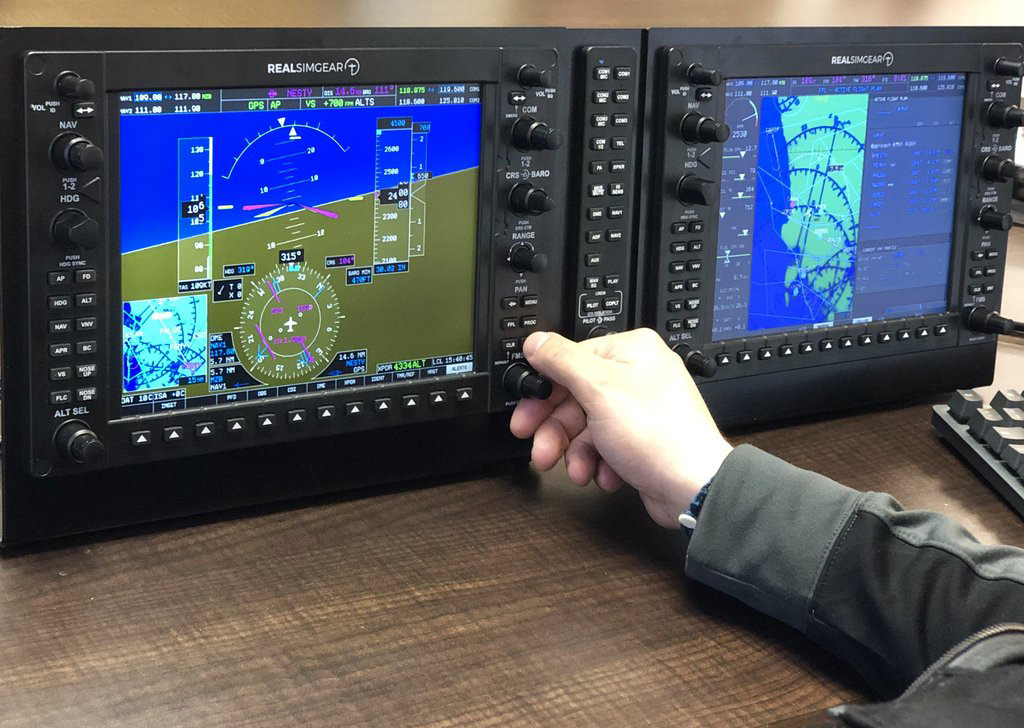Recreating the Final Flight of the Red Baron
Today in Microsoft Flight Simulator, I’m going to be checking out the Fokker Dr.I triplane, made famous in World War I by “The Red Baron.”
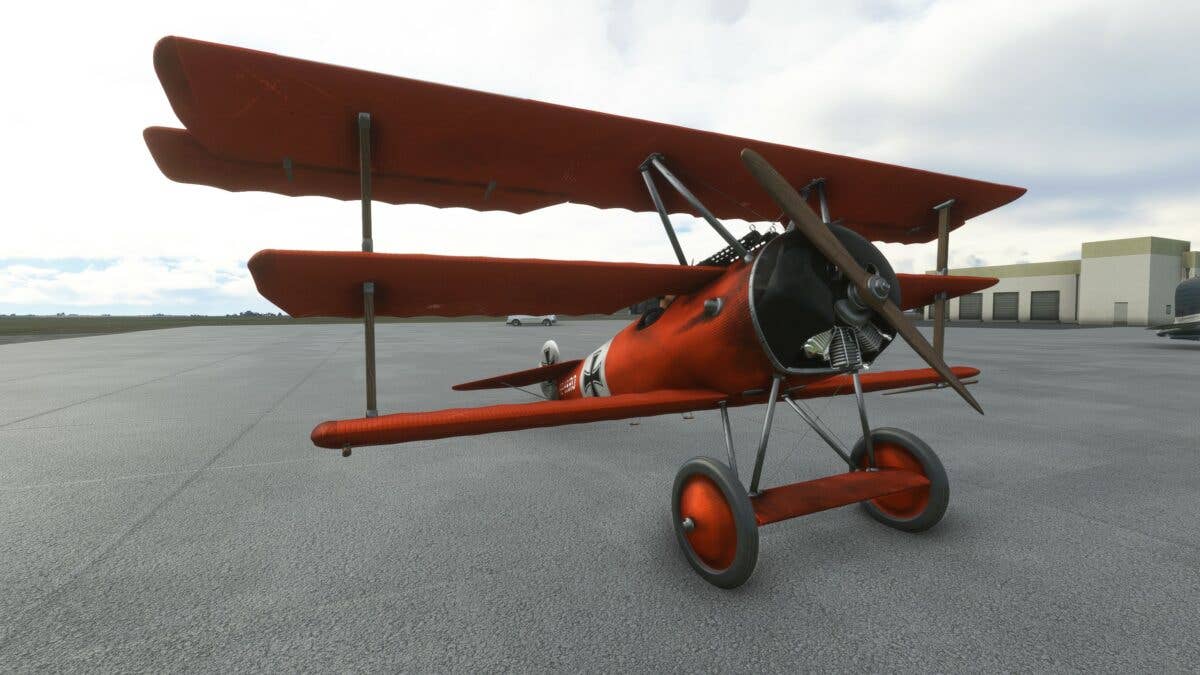
The Fokker Dr.I triplane as it appears in Microsoft Flight Simulator. [Courtesy: Patrick Chovanec]
Today in Microsoft Flight Simulator, I’m going to be checking out the Fokker Dr.I triplane, made famous in World War I by “The Red Baron.”
Anthony Fokker was Dutch, born in the colonial East Indies (present-day Indonesia). In 1910, when he was 20, his father sent him to Germany to train as an auto mechanic. But inspired by the Wright Brothers’ demonstration flights in Europe, his passion soon shifted to aviation, and he began learning to fly and building his own airplanes. He soon set up his own aircraft manufacturing company in Berlin.
With the outbreak of World War I, Fokker’s company was taken over by the German government, but he remained as its director and lead designer. As the airplane was just being introduced into combat, he designed—and test flew—several successful models, including the single-wing “Eindecker.” Fokker was well regarded by German aces as a daring and skilled pilot in his own right, though his shortcomings in managing a business often caused problems.
During World War I, most airplanes (Fokker’s Eindecker excluded) were biplanes with two sets of wings, one above the other. The main reason for this design choice was that the available engines were underpowered. This airplane’s nine-cylinder rotary piston engine, for instance, produces just 110 horsepower, compared to a Cessna 172 today normally found with a 160 or 180 hp engine.
This lack of power meant aircraft needed more surface area to produce enough lift, at slower speeds. One way to achieve this would be to make the wings longer, but the weakness of the main construction materials they had, wood and fabric, made this impractical. The more practical alternative was to add a second set of wings, even though it increased drag.
The Fokker Dr.I took this thinking a step further, adding a distinctive third set of wings. Introduced in 1917, it was a response to the rapid advance of new Allied biplanes such as the Sopwith Camel. It was directly inspired, however, by another Allied airplane, a Sopwith Triplane (or “Tripe”), which the Germans had shot down and Fokker was able to examine.
In fact, the Fokker Dr.I had a fourth wing, a smaller airfoil connecting its wheels that also contributed significantly to lift.
I’ll talk more about the advantages and disadvantages all these wings brought with them, but for now, let’s get into the air. I’m at an airfield near Albert, in northern France, to reenact the Red Baron’s last fatal flight on April 21, 1918.
One disadvantage of all these wings is apparent right away. When taxiing, they almost completely block any view forward. Some pilots compare the Dr.I’s wings to a Venetian blind that closes when the tail is down.
It’s not just that you can’t see. The airflow disrupted by all three wings gives you very poor rudder control. There are no brakes, so it tends to make you wobble all over the place. It was often said Dr.I pilots faced more danger on the ground than in combat.
Manfred von Richthofen was a young Prussian aristocrat from Silesia, what is today part of Poland. He started the war as a cavalry officer, but soon joined the new German air force, where he gained a reputation as a cold and calculating hunter in the air.
For easy recognition, German pilots often painted their airplanes in distinct and colorful designs, like the heraldry of a medieval knight. Richthofen came to paint his mounts bright red, earning him the nickname The Red Baron (though he sometimes borrowed other airplanes for combat).
For most of his career, Richthofen did not fly the Dr.I, but earlier biplane fighters. But after he began flying the triplane in November 1917, he became a firm and vocal advocate. It was his favorite airplane.
Why? For one thing, the lift from all those wings gave it a 50 percent better climb rate than any Allied foe. The ability to dive down onto your opponent from the higher position was a crucial advantage in combat.
Second, if you look head-on, the wings of the Fokker Dr.I are absolutely straight. Normally they tilt slightly up to provide some stability. But an unstable airplane is more agile, more responsive—as long as you can retain control.
The Dr.I is very unstable. Many pilots compare it to flying a helicopter. It does not want to fly in a straight line. You have to keep your hands on the controls, making constant adjustments all the time.
Now I was able, without too much difficulty, to do a loop. But every time I tried to roll, I couldn’t get it out, and it just went into an unrecoverable spin. That’s a stability issue, and you’d have to be a master to overcome it.
Last but not least, all those wings continued to block your view in the air, leaving major blind spots. The Dr.I might be a better dogfighter, but that didn’t matter if the enemy saw you first—or you lost sight of him in the midst of battle.
One potential advantage of the triplane was the middle wing provided a lot of structural support, making it possible to do away with the vulnerable wires keeping the wings in place. In theory, it could take more damage and still hold together. But designers may have overestimated the feature because the Dr.I’s wings became notorious for breaking apart under stress, compelling Fokker to make expensive repairs and modifications.
In any case, all those wings created a lot of drag, which made the Dr.I slow. The Sopwith Camel, for instance, could outpace it by at least 15 mph, which meant it could engage or run away from the Fokker triplane at will.
In the Spring of 1918, the Germans launched a huge offensive in France. The revolution in Russia the previous year had taken that Allied country out of the war, allowing the Germans to shift their focus almost entirely to the Western Front. They gained substantial ground, pushing the Allies back almost all the way back to Amiens.
We’re flying over some of the ground they won now. The town below is Cappy, a village along a bend in the River Somme where the Red Baron’s fighter squadron was based in April 1918. The airfield no longer exists.
On April 21, 1918, Richthofen was just 25 years old. He had 80 confirmed kills. He had become a huge celebrity in Germany and the high command feared that should anything happen to him, it could be a serious blow to morale.
That morning, wearing monogrammed silk pajamas beneath his fur-lined flying suit, Richthofen flew over the small ridge at Morlancourt, where his younger cousin Wolfram was engaged in a dogfight with enemy aircraft.
Richthofen would have climbed for advantage, probably a lot higher than I’m doing here. Once he saw one of the British airplanes’ guns jam, he descended for what he thought would be one more easy kill.
The Dr.I was armed with twin Spandau LMG 08/15 7.92x57mm machine guns. They, too, were prone to jamming, which is why they carried two.
Another British airplane, a Camel flown by Canadian Captain Arthur Roy Brown (with 10 confirmed kills himself), swooped down behind Richthofen himself and fired, observing several hits.
Richthofen continued flying for well over a minute. It was not clear that Brown’s bullets had done him in. Then, a few moments later, Richthofen’s triplane crashed in the small notch of tan field immediately below me between the road and the trees, just outside the French village of Vaux-sur-Somme.
You can see the field just ahead of me here, to the left of the road before the trees. Brown was credited with the kill, but there is a lot of mystery and controversy over who truly shot the Red Baron down.
The thinking these days is that Richthofen was most likely killed by a bullet fired by Australian anti-aircraft gunners on the ground, which punctured his chest and killed him immediately, causing his airplane to crash.
I’m going to try to land the Fokker Dr.I now, in a somewhat larger field just beyond where the Red Baron went down.
One interesting thing about the rotary engines of the time is something called the “blip switch”. Rather than reducing power to land, the pilot uses this thumb switch to temporarily turn off the ignition magnetos for a few seconds, reducing rpm. Because the rotary engine is still spinning, releasing the blip switch immediately re-engages engine power. This method of managing power and speed is why World War I planes sounded like their engines were “stuttering” when they came in to land when they were functioning just as intended.
The Dr.I was—and is—known as notoriously difficult to land, mainly because you can’t see a darn thing straight ahead, especially once you level off. It also wants to float, because of all the lift from its wings.
I ended up ground looping almost immediately on landing, and nearly tipping over, because especially in 2D (on a computer screen) you just can’t tell if you’re veering off, and the rudder offers little control anyway.
Richthofen loved the Dr.I because it was an extremely agile dogfighter, with an incredible climb rate. But that was because he was an excellent pilot who could overcome most of its disadvantages by sheer skill. Even so, the major obstructions to the view from the cockpit may have rendered him vulnerable to surprise attack and contributed to his demise. Soon after the Red Baron’s death, the German air force—and Fokker—went back to reliable biplanes.
The Red Baron’s death was a blow to German morale—and took place just as the tide was turning against Germany’s final offensive on the Western Front. The Allies took the counteroffensive, pushing the German army to the verge of collapse, and the war was over by November.
Though 320 Fokker Dr.Is were built (and 171 went into combat service), only three of them survived the war. They were all destroyed later, and only fragments of them remain on display in museums. The only Fokker triplanes still flying today are replicas inspired by the original—and its famed association with the Red Baron.
I hope you’ve enjoyed this short excursion into the skies over France in early 1918, as well as a closer look at an iconic airplane, the Fokker Dr.I triplane.
If you’d like to see a version of this story with more historical photos and screenshots, you can check out my original post.
This story was told utilizing the freeware Fokker Dr.I created by mykrode and downloaded from the flightsim.to community.

Sign-up for newsletters & special offers!
Get the latest FLYING stories & special offers delivered directly to your inbox

